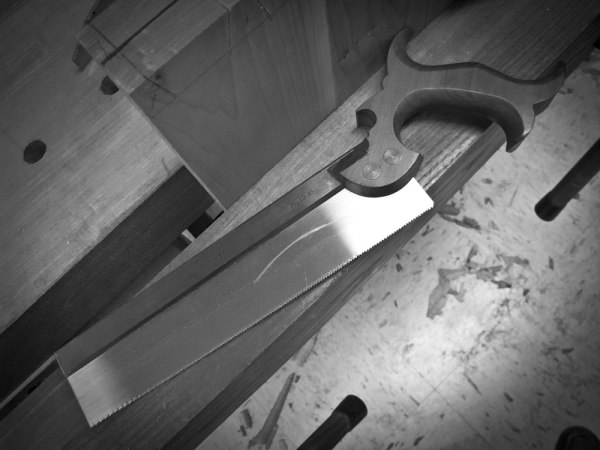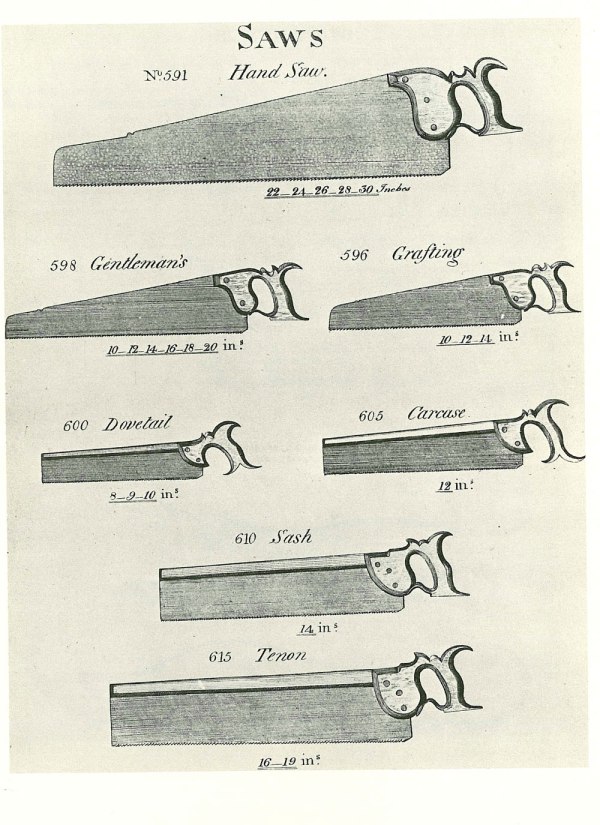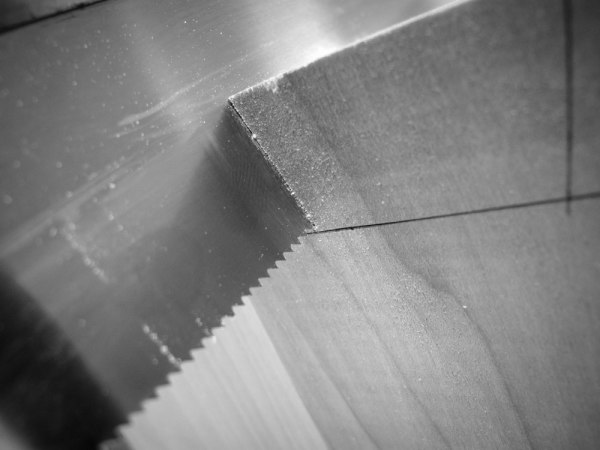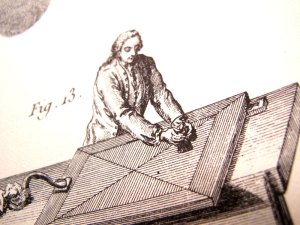The Advantages of Saws with ‘Tapered’ or ‘Canted’ Blades –

During every class I teach where we pick up a saw, a students always asks the following question: Why is your sawblade narrower at the toe?
This characteristic of some backsaws is curious at first to the modern eye. Many of the backsaws from the 19th and 20th centuries have blades that are perfect rectangles. And yet many old saws have blades that are narrower at the toe than they are at the heel.
Modern sawmakers who do this have different names for this feature. Lie-Nielsen Toolworks says the blades are “tapered,” which can be confusing because sawblades can also be tapered in their thickness. Gramercy Tools says their saws are “canted,” which is confusing because I don’t exactly know what that word means at first glance.
In any case, it means the blades are narrower at the toe. Many old saws have this shape. The question, however, is why.
Some woodworkers say that vintage blades are tapered or canted because of poor sharpening or because the blade has come loose from its back and has slid down. While both of these things are quite possible, my opinion is that the feature is very desirable and was commonly known among early sawmakers.
If you look at early catalog drawings of saws, the blades would have a tapered or canted shape. The most famous example is the page of saws in “Smith’s Key.” (I first wrote about the features of these saws seven years ago in this blog entry.)

So why were the saws tapered or canted? My opinion: It makes for a better saw.
Saws that are narrower at the toe have the following working characteristics.
1. The saw is lighter at the toe because there is less steel there.
2. On a related note, removing that steel shifts the center of gravity of the tool back a bit, making it feel lighter.
3. When you push these saws forward, every tooth is followed by a tooth that is a little lower. The saw feels more aggressive (to me, at least).
4. Most importantly: When you are sawing dovetails or any other joint, the canted or tapered blade allows you to saw to your baseline on the front side of the work and still be shy of the baseline on the backside of the work. Then you can look over the work and finish the job.


I love canted/tapered blades. I prefer them in all instances and for all of my joinery saws. Whether you buy into the historical argument or not is immaterial. Today we have a choice when we buy saws: tapered/canted or not tapered/canted.
I think the tapered/canted blades are clearly an improvement.
— Christopher Schwarz
P.S. I’m not recommending you throw away your non-tapered/canted blades. Quite the opposite. You can easily joint the teeth of your saws so the blade is canted/tapered. Just take more jointing strokes with the file at the toe of the blade. Then file the saw normally. After a few sharpenings your blade will be tapered like an old saw. Then you can file the toothline normally during sharpenings.




